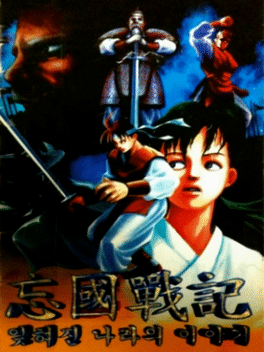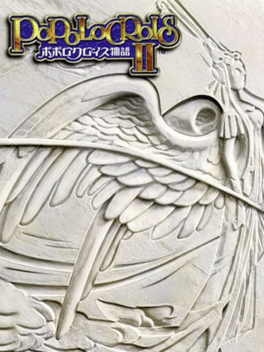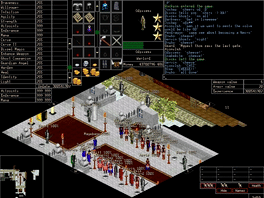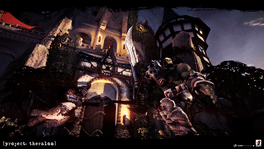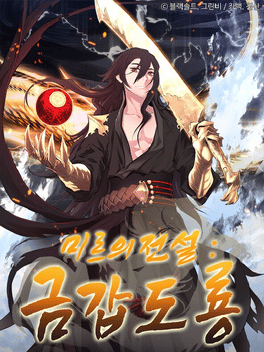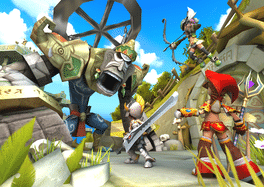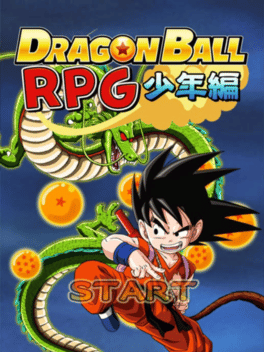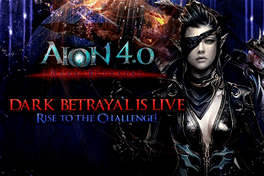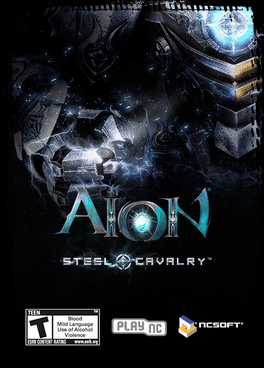Most Popular Role Playing Rpg Games - Page 326
-
Romance of the Forgotten Kingdom
1995
Romance of the Forgotten Kingdom is a role-playing game set during the Joseon period of Korea. It was developed by Mirinae Software in 1995 for DOS computers. -
EverQuest: Call of the Forsaken
2013
Call of the Forsaken is the twentieth expansion pack for the original EverQuest. -
PoPoLoCrois Monogatari II
2000
The direct sequel to 1996's PoPoLoCrois Monogatari. Picking up two years after the events of the first game, the game sees series protagonist Prince Pietro tasked with retrieving a crown from a nearby cave as part of his rite of succession. But after finding the crown, he encounters a mysterious figure. Identifying himself as Baskal, the figure delivers a strange prophecy to Pietro, and asks the prince a question. "What do you think the true treasure of kings is?" With this question begins a touching, romantic, and sometimes tragic journey that will reunite Pietro with familiar faces, introduce him to new companions, and forever change the boy prince of the Kingdom of PoPoLoCrois. A much beloved sequel that many fans remember as the high point of the series, PoPoLoCrois Monogatari II builds on the already beautiful pixel art graphics of the first game, with detailed, lovingly crafted environments and some outstanding sprite animation. Spread across three discs, the game also features full voice acting for its st -
Aranock Online
2005
Aranock Online
2005
A free massively multiplayer online role playing game based on Mercenaries of Astonia by Daniel Brockhaus. Aranock Online has seen a significant amount of development over the years and still entertains a loyal few to this day. While increasingly showing its age, now more than ever it provides a refreshing take on the MMO genre and offers a unique gaming experience. -
Legend of Mir
1998
Legend of Mir
1998
In 1998 Wemade Entertainment released their first game under the Mir franchise, sadly no one outside of South Korea and China got opportunity to play. The project was abandoned very shortly after it's release and that's where it stayed until now. Over the years screenshots were shared around old forums and little was known of the game that so little people managed to play or own. -
Heroes of the Obelisk
Heroes of the Obelisk is an MMO purely designed and played around instanced zones. There are dungeons for each level in varying difficulties, each of which has their own quests and items to complete and obtain. -
Fullmetal Alchemist: To the Promised Day
2010
Fullmetal Alchemist: To the Promised Day is a role-playing PSP game by Bandai. Just like many other Bandai-released games, it was never released outside Japan. Unlike the last action PSP game, it follows the Fullmetal Alchemist: Brotherhood story in more detail. -
Dragon Ball RPG: Shounen-hen
2013
Mobile role playing game that takes place prior to the "Dragon Ball Z" storyline. -
Euphory
Side-scrolling, Metroidvania-style, action RPG, released by System Sacom in 1987. -
Boundra
A free-to-play, Japanese fantasy MMORPG developed by InterServ and published in Japan by Vector. -
SaGa 2: Hihou Densetsu - Goddess of Destiny
2009
SaGa 2: Hihou Densetsu - Goddess of Destiny is a role-playing video game released in 2009 for the Nintendo DS exclusively in Japan. The game is a remake of SaGa 2: Hihou Densetsu, featuring full 3D cel-shaded graphics, all new artwork by Gen Kobayashi and arranged soundtrack by Kenji Ito. This game uses a similar gameplay to the original Game Boy title, with a few quality of life improvements and new additions. Random encounters were ditched entirely, with monsters being visible on the field much like in later SaGa games. -
Magicoal
1993
Magicoal
1993
The boy Rhun and the girl Melvy live in a quiet forest village, both studying the art of magic. They enjoy a peaceful life, learning the secrets of the spirits and magical creatures populating the area. But on one fateful night, everything changes. A horde of goblins invades the village, burning it down. And it looks like the local church is in cohorts with a powerful demon bent on destruction! Before the heroes can realize what is happening, they are forced to escape into the forest, with only their magical powers at their side... Magicoal is a "pseudo-RPG", i.e. an action-adventure with some minor RPG elements (money, items, etc.), but without an experience system of any kind. It can be played in two-player cooperative mode, controlling Rhun and Melvy, or as a single-player game, choosing one of them and letting the computer AI control the other. The player(s) can switch between the two at any time. Most of the game is dedicated to exploring top-down areas populated by enemies, and dealing with them in action-b -
Westward Journey Online
Chinese MMORPG, based on the classic Chinese novel Journey to the West. At its height, it was the most popular MMORPG in China.
